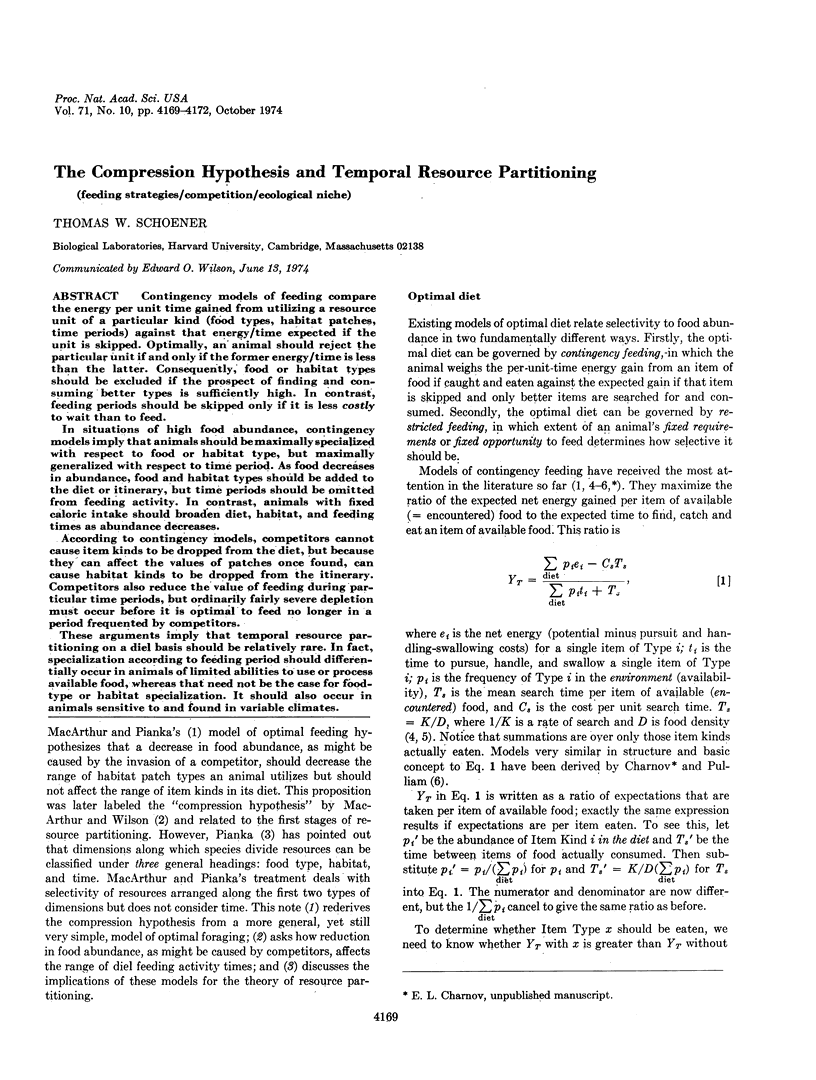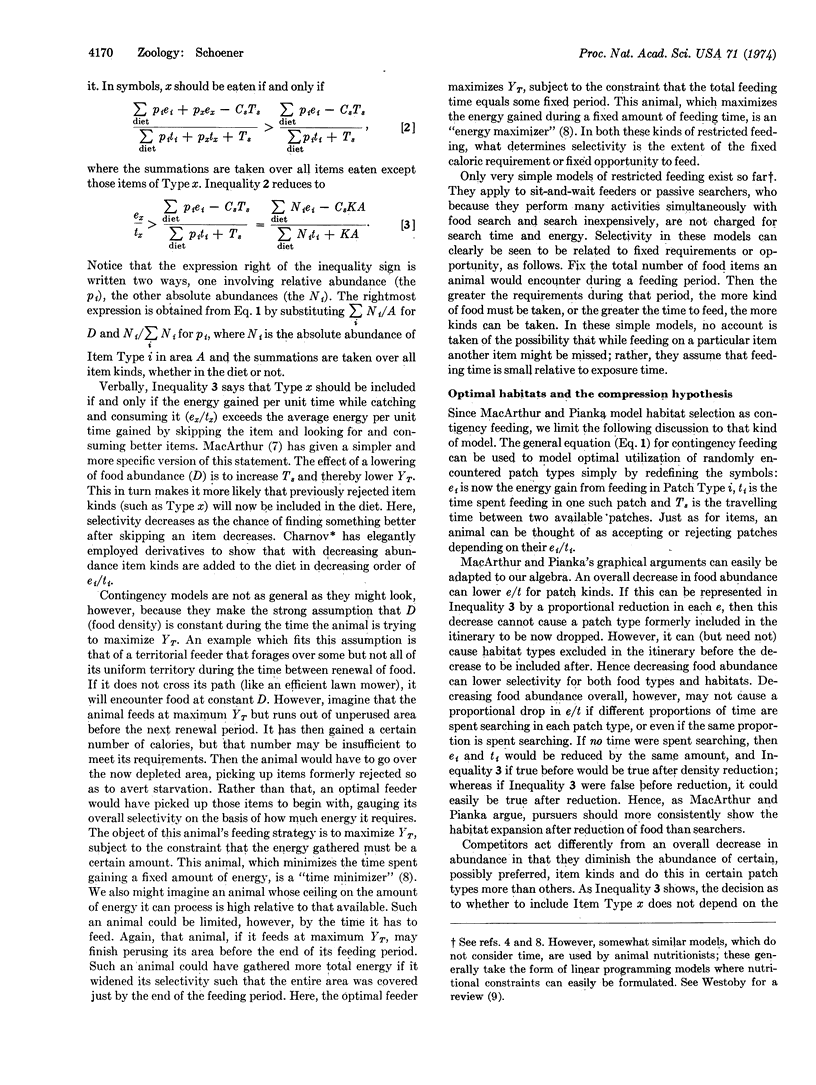Abstract
Contingency models of feeding compare the energy per unit time gained from utilizing a resource unit of a particular kind (food types, habitat patches, time periods) against that energy/time expected if the unit is skipped. Optimally, an animal should reject the particular unit if and only if the former energy/time is less than the latter. Consequently, food or habitat types should be excluded if the prospect of finding and consuming better types is sufficiently high. In contrast, feeding periods should be skipped only if it is less costly to wait than to feed.
In situations of high food abundance, contingency models imply that animals should be maximally specialized with respect to food or habitat type, but maximally generalized with respect to time period. As food decreases in abundance, food and habitat types should be added to the diet or itinerary, but time periods should be omitted from feeding activity. In contrast, animals with fixed caloric intake should broaden diet, habitat, and feeding times as abundance decreases.
According to contingency models, competitors cannot cause item kinds to be dropped from the diet, but because they can affect the values of patches once found, can cause habitat kinds to be dropped from the itinerary. Competitors also reduct the value of feeding during particular time periods, but ordinarily fairly severe depletion must occur before it is optimal to feed no longer in a period frequented by competitors.
These arguments imply that temporal resource partitioning on a diel basis should be relatively rare. In fact, specialization according to feeding period should differentially occur in animals of limited abilities to use or process available food, whereas that need not be the case for food-type or habitat specialization. It should also occur in animals sensitive to and found in variable climates.
Keywords: feeding strategies, competition, ecological niche
Full text
PDF



Selected References
These references are in PubMed. This may not be the complete list of references from this article.
- Schoener T. W. Optimal size and specialization in constant and fluctuating environments: an energy-time approach. Brookhaven Symp Biol. 1969;22:103–114. [PubMed] [Google Scholar]
- Schoener T. W. Resource partitioning in ecological communities. Science. 1974 Jul 5;185(4145):27–39. doi: 10.1126/science.185.4145.27. [DOI] [PubMed] [Google Scholar]


